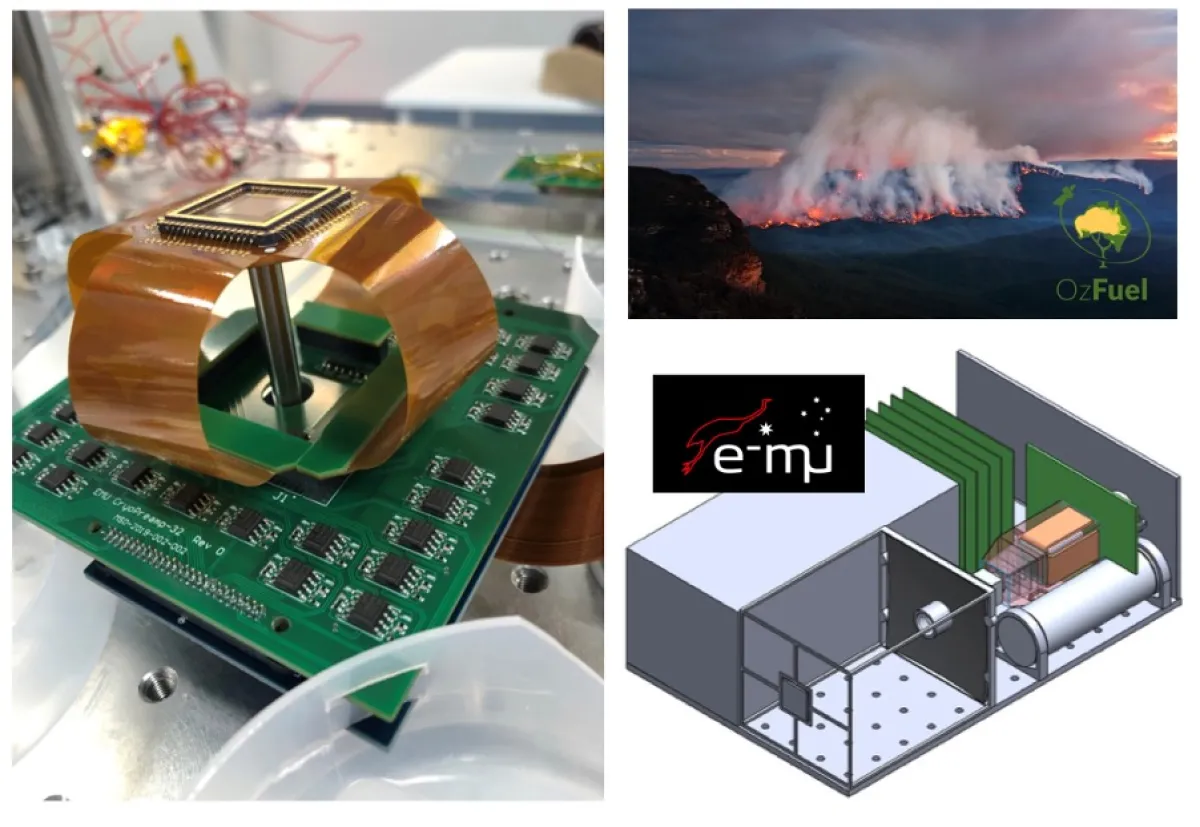Infrared sensor systems for Astronomy and Earth Observation from space
Or team is working with major national and international detector vendors to develop novel new sensor systems that solve tricky problems not only for astronomy but also for more down-to-Earth issues such as Bushfire Hazard management from Low Earth Orbit remote sensing.
Research themes
Project status
Content navigation
About

Digital infrared detector systems have been around for a while, but the technology lags behind that of visible-light sensors. This is largely because visible-light system can be based on Silicon which is an excellent and well understood semi-conductor. However, since Silicon is transparent to light at a wavelength beyond 1 micron we need hybrid systems based on a combination of annoyingly dissimilar materials. When we combine this with the parasitic thermal emission from “room-temperature” sensors and equipment (including our telescopes) infrared sensor systems need an additional layer or careful optical, mechanical, thermal and radiometric analysis compared to their visible-light counterparts.
Critically, access to infrared wavelengths gives a unique incite to many problems in astronomy and also for Earth observation remote sensing. Or team is working with major national and international detector vendors to develop novel new sensor systems that solve tricky problems not only for astronomy (the evolution of distant galaxies, measurement of exo-planet atmospheres, and, stellar evolution for example) but also for more down-to-Earth issues such as Bushfire Hazard management, mineralogical surveys and disaster relief support from Low Earth Orbit remote sensing.
Our group has a range of current projects that can be tailored to the interests and experience level of interested students.
Suggested reading
Matthew, Gilbert, Sharp et al., “Infrared Remote Sensing Using Low Noise Avalanche Photodiode Detector”, https://arxiv.org/abs/2210.04770
Mathew, Gilbert Sharp et al., 2022, JATIS, 8, 4002, "Emu: a case study for TDI-like imaging for infrared observation from space", https://arxiv.org/abs/2204.08713
The ANU OzFuel Mission, https://inspace.anu.edu.au/activity/missions/ozfuel
“Yes, it’s rocket science: Australia needs eyes in space to monitor our tinderbox landscape”, https://theconversation.com/yes-its-rocket-science-australia-needs-eyes-in-space-to-monitor-our-tinderbox-landscape-166667

